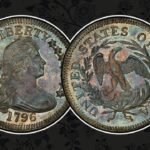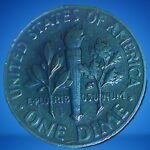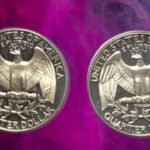If you’ve ever held a handful of old U.S. dimes, you might’ve noticed two familiar faces: the dignified profile of Franklin D. Roosevelt and the striking, winged Liberty head that almost looks like the Roman god Mercury. These two designs — the Roosevelt Dime and the Mercury Dime — are among the most beloved coins in American numismatic history.
But which is more collectible? Which holds more value? And how do you even tell them apart if you’re new to coin collecting? Don’t worry — we’re going to break it all down, step by step, in plain English.
A Quick Overview
Before diving into details, here’s a quick comparison to get you oriented:
| Feature | Mercury Dime (1916–1945) | Roosevelt Dime (1946–Present) |
|---|---|---|
| Designer | Adolph A. Weinman | John R. Sinnock |
| Obverse Design | Liberty with a winged cap (often mistaken for Mercury) | Franklin D. Roosevelt |
| Reverse Design | Fasces with olive branch (symbolizing strength and peace) | Torch with olive branch and oak branch |
| Composition (Pre-1965) | 90% Silver, 10% Copper | 90% Silver, 10% Copper |
| Composition (Post-1965) | N/A (no longer minted) | 91.67% Copper, 8.33% Nickel (clad) |
| Minting Years | 1916–1945 | 1946–Present |
| Average Value (Circulated) | $2–$10 (common dates) | Face value (for most), silver ones $2–$3 |
| Key Dates | 1916-D, 1921, 1921-D | 1949-S, 1950-S, 1996-W (special) |
A Little History Never Hurts
Let’s start with the Mercury Dime — officially called the Winged Liberty Head Dime. Designed by Adolph A. Weinman, it debuted in 1916, replacing the Barber Dime. The image of Liberty wearing a Phrygian cap with wings was meant to symbolize freedom of thought. But because it looked so much like Mercury, the Roman messenger god, collectors quickly gave it the nickname “Mercury Dime.”
The coin was produced until 1945, the same year President Roosevelt passed away. Just a year later, the Roosevelt Dime was introduced in 1946 as a tribute to FDR’s leadership and his efforts in founding the March of Dimes, which helped fight polio.
So in a way, the Roosevelt Dime wasn’t just a new design — it was a symbolic continuation of a legacy.
Design and Symbolism
The Mercury Dime is often praised for its artistry. Honestly, it’s one of the most beautiful U.S. coins ever made. The reverse design — a fasces bound by an olive branch — represents both war readiness and peace. Collectors adore its balance of classical imagery and subtle elegance.
On the flip side, the Roosevelt Dime has a more straightforward, modern design. John Sinnock’s portrait of Roosevelt is clean, direct, and patriotic. The reverse — featuring a torch flanked by olive and oak branches — represents liberty, peace, and strength.
It may not be as “romantic” as the Mercury design, but it’s strong and dignified, just like the man it honors.
Composition and Collectibility
Here’s where things get interesting. Both dimes were made of 90% silver until 1964. After that, due to rising silver prices, the U.S. Mint switched to a copper-nickel clad composition for circulating dimes starting in 1965.
This means all Mercury Dimes and Roosevelt Dimes from 1946–1964 contain real silver — about 0.0723 troy ounces per coin.
From a collector’s perspective:
- Mercury Dimes have more numismatic appeal. Key dates like the 1916-D and 1921-D can fetch hundreds or even thousands of dollars in top condition.
- Roosevelt Dimes, on the other hand, are more common, but certain varieties — like the 1949-S, 1950-S, and the 1996-W (West Point Mint) — are worth looking for.
Which One Should You Collect?
To be fair, it depends on your goals.
If you’re after beauty and historical charm, Mercury Dimes win hands down. They’re older, more artistic, and carry that early 20th-century mystique.
If you prefer affordability and accessibility, Roosevelt Dimes are your best bet. You can start collecting them easily from circulation or inexpensive coin rolls. Plus, completing a full date-and-mintmark set is a fun and achievable challenge.
Some collectors actually go for both — building a “silver dime set” that includes all Mercury and early Roosevelt dimes from 1916 to 1964. It’s a great way to bridge two classic eras of American coinage.
Tips for New Collectors
- Check for Silver: Remember, pre-1965 dimes are silver. They have a distinct sound and a slightly different color than modern clad coins.
- Condition Matters: Even a common Mercury Dime can be worth several times its melt value if it’s in excellent shape.
- Store Properly: Keep coins in acid-free holders or albums. Avoid PVC plastic — it can damage the metal over time.
- Don’t Clean Them: Seriously — cleaning coins can reduce their value drastically. Let the natural toning stay.
- Start Small: Begin with circulated examples before hunting for rare key dates. It’s more fun (and budget-friendly) that way.
FAQs About Mercury and Roosevelt Dimes
Q1: Are Mercury Dimes made of real silver?
Yes! Every Mercury Dime minted from 1916 to 1945 contains 90% silver.
Q2: What is the rarest Mercury Dime?
The 1916-D Mercury Dime is the holy grail. Only about 264,000 were minted — extremely low for a dime.
Q3: Are Roosevelt Dimes worth collecting?
Definitely. While most are common, early silver issues and rare mintmarks like the 1996-W can be valuable.
Q4: How can I tell if my dime is silver?
Look at the edge. Silver dimes have a solid silver color, while modern clad dimes show a copper stripe along the edge.
Q5: Which dime is more valuable overall?
Mercury Dimes generally have higher collectible value, especially key dates, but Roosevelt Dimes are more attainable and still rewarding to collect.
Final Thought
At the end of the day, whether you lean toward the elegant Mercury Dime or the steadfast Roosevelt Dime, both coins tell powerful stories about American history. One reflects the artistic spirit of the early 1900s, and the other honors a leader who helped shape modern America.
If you ask me, there’s room in every collection for both. After all, why choose between beauty and legacy when you can have both jingling side by side in your collection?










